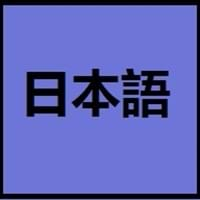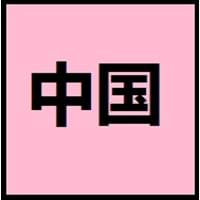Countries
Japan
China, Hong Kong, Macau, Singapore, Taiwan
National Language
Japan
China, Taiwan
Second Language
Not spoken in any of the countries
Republic of Brazil
Speaking Continents
Asia, Pacific
Asia
Minority Language
Palau
Indonesia, Malaysia
Regulated By
Agency for Cultural Affairs (文化庁) at the Ministry of Education
Chinese Language Standardization Council, National Commission on Language and Script Work, Promote Mandarin Council
Interesting Facts
- In Japanese Language, there are 4 different ways to address people: kun, chan, san and sama.
- There are many words in Japanese language which end with vowel letter, which determines the structure and rhythm of Japanese.
- Chinese language is tonal, since meaning of a word changes according to its tone.
- In Chinese language, there is no grammatical distinction between singular or plural, no declination of verbs according to tense, mood and aspect.
Similar To
Korean Language
Not Available
Derived From
Not Available
Not Available
Alphabets in
Japanese-Alphabets.jpg#200
Chinese.jpg#200
Scripts
Kana
Chinese Characters and derivatives
Writing Direction
Left-To-Right, Horizontal, Top-To-Bottom
Left-To-Right, Horizontal, Top-To-Bottom
Hello
こんにちは (Kon'nichiwa)
您好 (Nín hǎo)
Thank You
ありがとう (Arigatō)
谢谢 (Xièxiè)
How Are You?
お元気ですか (O genki desu ka?)
你好吗? (Nǐ hǎo ma?)
Good Night
おやすみなさい (Oyasuminasai)
晚安 (Wǎn'ān)
Good Evening
こんばんは (Konbanwa)
晚上好 (Wǎnshàng hǎo)
Good Afternoon
こんにちは (Konnichiwa!)
下午好 (Xiàwǔ hǎo)
Good Morning
おはよう (Ohayō)
早安 (Zǎo ān)
Please
お願いします (Onegaishimasu)
请 (Qǐng)
Sorry
ごめんなさい (Gomen'nasai)
遗憾 (Yíhàn)
Bye
さようなら (Sayōnara)
再见 (Zàijiàn)
I Love You
愛しています (Aishiteimasu)
我爱你 (Wǒ ài nǐ)
Excuse Me
すみません (Sumimasen)
劳驾 (Láojià)
Dialect 1
Sanuki
Mandarin
Where They Speak
Kagawa
China, Malaysia, Singapore, Taiwan
Where They Speak
Fukuoka
China, United States of America
How Many People Speak
Not Available
Where They Speak
kansai
China, Malaysia, Singapore, Vietnam
How Many People Speak
Not Available
Second Language Speakers
Not Available
Native Name
日本語
中文 (zhōngwén)
Alternative Names
Not Available
Not Available
French Name
japonais
chinois
German Name
Japanisch
Chinesisch
Pronunciation
/nihoɴɡo/: [nihõŋɡo], [nihõŋŋo]
Not Available
Ethnicity
Japanese (Yamato)
Han
Language Family
Japonic Family
Sino-Tibetan Family
Subgroup
Not Available
Not Available
Branch
Not Available
Not Available
Early Forms
Old Japanese, Early Middle Japanese, Late Middle Japanese and Early Modern Japanese
No early forms
Standard Forms
Japanese
Standard Chinese
Signed Forms
Signed Japanese
Wenfa Shouyu 文法手語 ("Grammatical Sign Language", Signed Mandarin (Taiwan))
Scope
Individual
Individual
ISO 639 6
Not Available
Not Available
Glottocode
nucl1643
sini1245
Linguasphere
45-CAA-a
79-AAA
Language Type
Living
Living
Language Linguistic Typology
Subject-Object-Verb
Subject-Verb-Object
Language Morphological Typology
Agglutinative, Synthetic
Analytic, Isolating
All Japanese and Chinese Dialects
Most languages have dialects where each dialect differ from other dialect with respect to grammar and vocabulary. Here you will get to know all Japanese and Chinese dialects. Various dialects of Japanese and Chinese language differ in their pronunciations and words. Dialects of Japanese are spoken in different Japanese Speaking Countries whereas Chinese Dialects are spoken in different Chinese speaking countries. Also the number of people speaking Japanese vs Chinese Dialects varies from few thousands to many millions. Some of the Japanese dialects include: Sanuki, Hakata. Chinese dialects include: Mandarin , Wu. Also learn about dialects in South American Languages and North American Languages.
Japanese and Chinese Speaking population
Japanese and Chinese speaking population is one of the factors based on which Japanese and Chinese languages can be compared. The total count of Japanese and Chinese Speaking population in percentage is also given. The percentage of people speaking Japanese language is 1.90 % whereas the percentage of people speaking Chinese language is 16.00 %. When we compare the speaking population of any two languages we get to know which of two languages is more popular. Find more details about how many people speak Japanese and Chinese on Japanese vs Chinese where you will get native speakers, speaking population in percentage and native names.
Japanese and Chinese Language Codes
Japanese and Chinese language codes are used in those applications where using language names are tedious. Japanese and Chinese Language Codes include all the international language codes, glottocodes and linguasphere.





